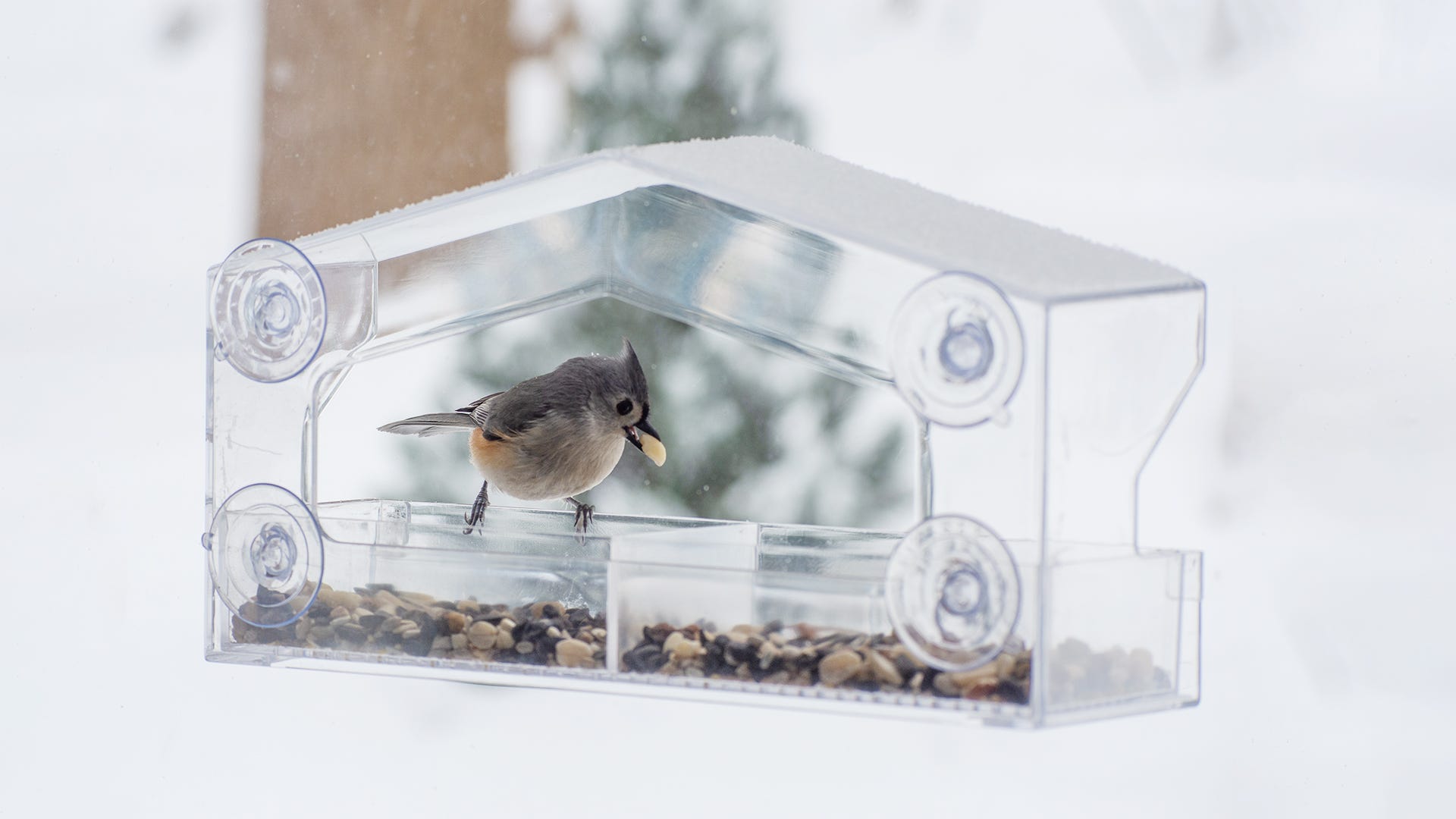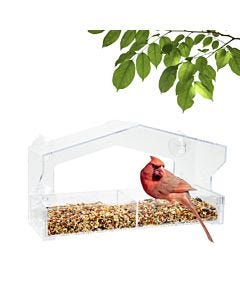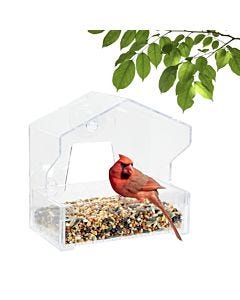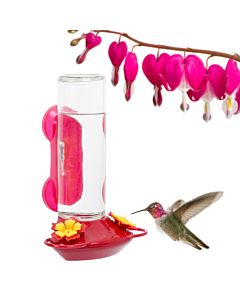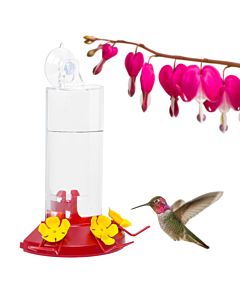When it comes to birdwatching, you can’t get any closer than having a window feeder! Watch your favorite birds for hours at a time, in any room that you choose. Most of your favorite backyard birds can be drawn to a window feeder with a little effort. By following our expert tips and tricks, you’ll be enjoying visits at your window feeder in no time.
Benefits of a Window Bird Feeder
What’s the difference between a window feeder and a normal feeder in the first place? As the name suggests, window feeders mount directly to the windows of your house and allow for a more intimate bird-watching experience since you are able to view birds from the other side of a window.
Window feeders offer several benefits over traditional bird feeders. These include:
- Bringing wildlife closer to your home
- Providing a convenient birdwatching option for small spaces
- They’re great for families and photographers
- Protecting birds from predators
- Enjoying birdwatching in any weather, at any time
Whether you feed hummingbirds or songbirds (or both!), we have window feeders to suit your needs. The Perky-Pet® Window Mount Plastic Hummingbird Feeder can hold up to 8 ounces of nectar and boasts 3 lifelike flower feeding ports so there’s room for multiple visitors. If you prefer glass feeders, the Perky-Pet® Window Mounted Glass Hummingbird Feeder is just what you need. Both options feature perches so hummingbirds can rest while they dine, and so you can enjoy a better view.
If you’re looking to serve up seed to your favorite backyard birds, we have options for that too! Our Small Window Bird Feeder holds ½ lb of seed, while our Large Window Bird Feeder holds 1 lb of seed. Our window-mounted seed feeders feature a large entrance to accommodate a variety of bird sizes and are made with crystal clear plastic to provide you with an unobstructed view. They even feature a removable seed tray to make filling and cleaning easy. There’s no need to remove the entire feeder every time it’s empty!
All of our window feeders use suction cups to provide a strong, secure hold on windows.
Feed Up, Close, & Personal
Attracting Birds to Your Window Feeder
To get the most out of your window feeders, there are ways that you can make them more attractive to the birds. Here are some ways that will help bring the birds you want to see, right to your window!
- Birdbaths – Because birds need water for drinking and bathing, they are often on the lookout for it. By placing a birdbath near your house and the feeder, it will attract them and potentially bring them to your feeder. Remember that moving water is even more alluring to birds!
- Take down other feeders – To draw attention to your new feeder, you might have to temporarily take down the rest of the feeders in your yard. Once the birds have discovered and are comfortable with the window feeders, you can place the other feeders around your yard again.
- Secure the feeder – Make sure that when you put your window feeder up that it is attached securely to the window. If a bird tries to land on it and it moves, it may deter the bird from coming back. To securely hang a window feeder, it is important to thoroughly clean your window first. Once clean, moisten the feeder’s suction cups with a bit of water or vegetable oil then apply the feeder to the glass. The moisture will create better suction, so the feeder stays in place.
- Keep it Clean – Birds are attracted to fresh, clean feeding stations just like us. Make sure to clean your feeders regularly, especially in hot weather. Dispose of any remaining seed or nectar every time you clean. Nectar should be replaced frequently to prevent mold.
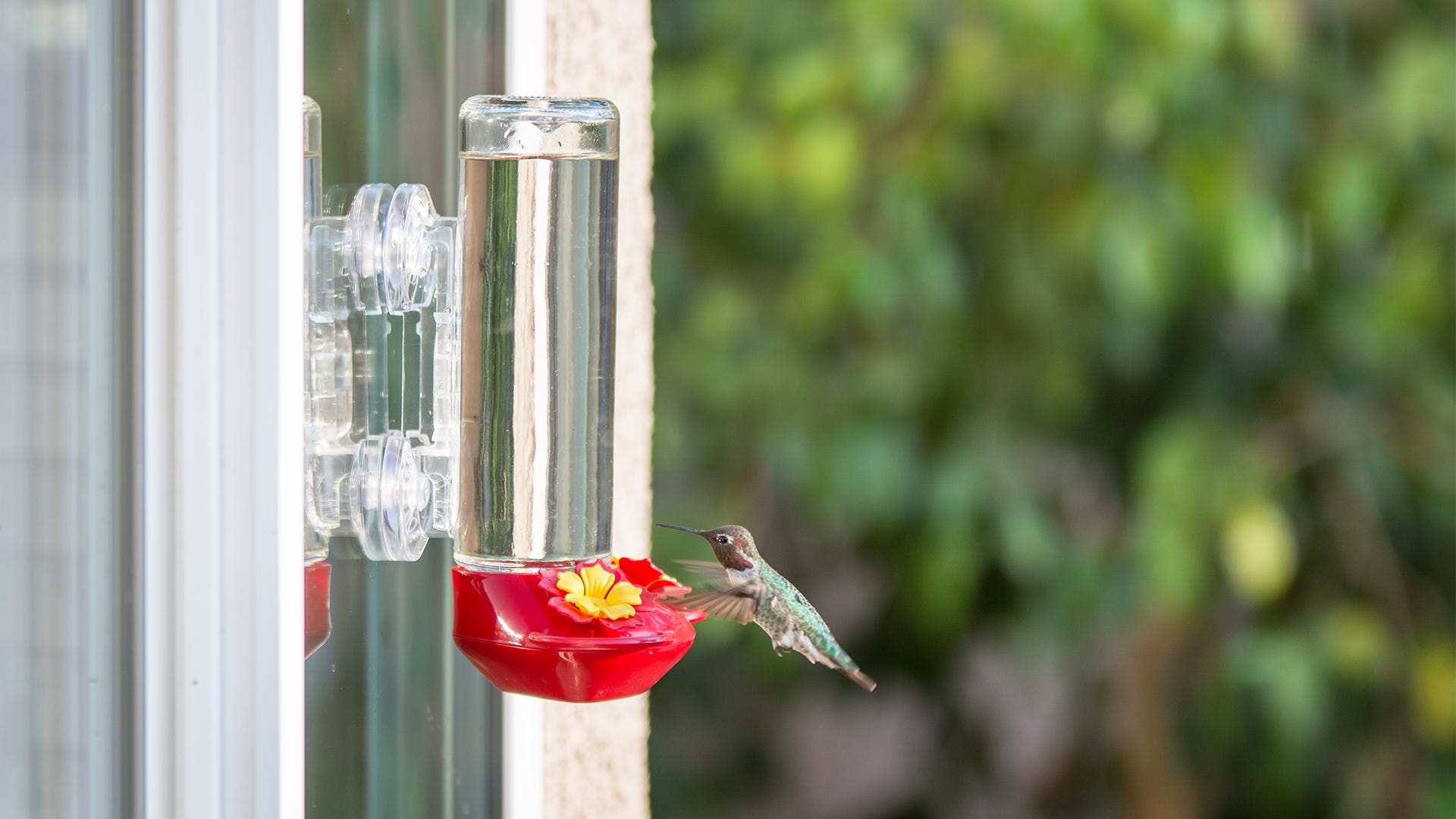
Where to Hang Your Window Feeder
Multiple windows may seem perfect for hanging a window feeder. However, you must consider the surrounding environment when choosing a window. Birds have quite a few natural predators. When setting up your window feeder, make sure that the feeder is high enough off the ground so that they aren’t stalked by predators from the ground, and make sure that there is sufficient coverage over the feeder for flying predators like hawks and falcons.
Also, it’s a good idea to place feeders closer to natural shelters like trees, shrubs, and other greenery. They will fly to these places for cover if they feel threatened, but it also provides a resting place where they can be hidden when needed.
When choosing a location, select a room that doesn’t have constant activity. Loud noises and movements from indoors might scare away birds from testing out the feeder. Be sure to keep this in mind once the feeder is set up as well. Keep the room relatively quiet when sitting down to enjoy their sights. If there is a lot of noise coming from the other side of the window, birds may not stick around.
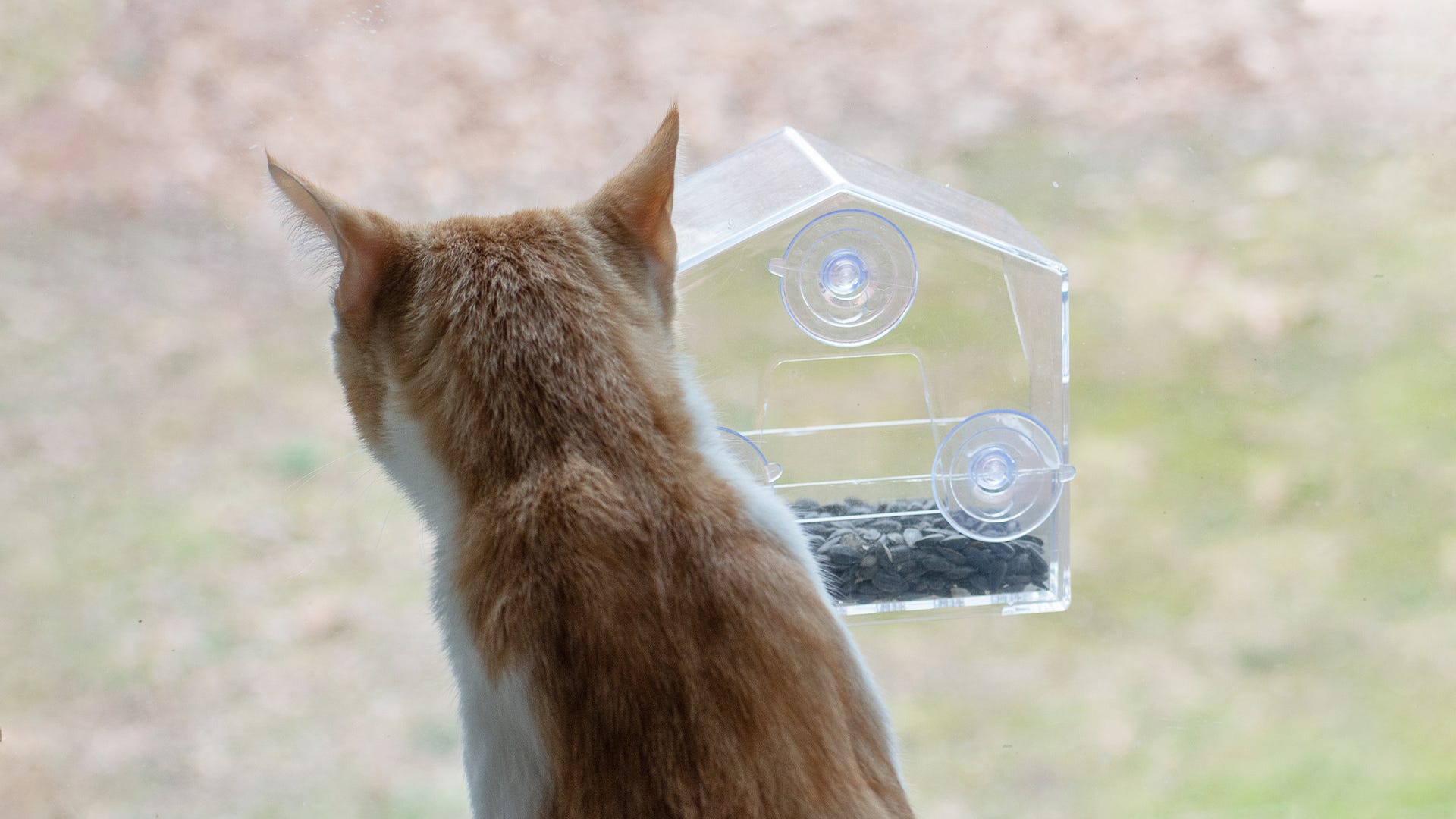
Bringing the Birds to Your Home
Bird watching is a fun hobby that people of all ages can enjoy. Why not bring the activity right into your backyard? Tell us about your backyard bird-watching stories on our Facebook Page! At Perky-Pet®, we want to keep you updated with all things bird. Learn about the latest and best practices while getting exclusive deals on our products by signing up for our e-newsletter!





